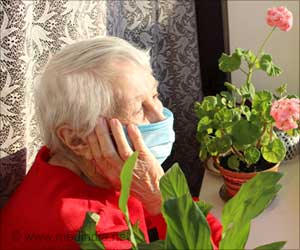COVID-19 rates are significantly higher among minority kids and those from lower socioeconomic backgrounds, reports a new study.

‘Understanding and addressing the causes of socioeconomic differences can mitigate disparities and limit the spread of COVID infection.’





Early in the pandemic, studies highlighted significant disparities in the rates of infection in the U.S., with minorities and socioeconomically disadvantaged adults bearing much higher burdens of infection. However, says Monika Goyal, M.D., M.S.C.E, a pediatric emergency medicine specialist and associate division chief in the Division of Emergency Medicine at Children's National whose research focuses on health disparities, it's been unclear whether these disproportionate rates of infection also extend to youth. To investigate this question, she and her colleagues looked to data collected between March 21, 2020, and April 28, 2020, from a drive-through/walk-up COVID-19 testing site affiliated with Children's National -- one of the first exclusively pediatric testing sites for the virus in the U.S. To access this free testing site, funded by philanthropic support, patients between the ages of 0 and 22 years needed to meet specific criteria: mild symptoms and either known exposure, high-risk status, a family member with high-risk status or required testing for work. Physicians referred patients through an online portal that collected basic demographic information, reported symptoms and the reason for referral.
When Dr. Goyal and her colleagues analyzed the data from the first 1,000 patients tested at this site, they found that infection rates differed dramatically among different racial and ethnic groups. While about 7% of non-Hispanic white children were positive for COVID-19, about 30% of non-Hispanic Black and 46% of Hispanic children were positive.
"You're going from about one in 10 non-Hispanic white children to one in three nonHispanic Black children and one in two Hispanic children. It's striking," says Dr. Goyal. Using data from the American Families Survey, which uses five-year census estimates derived from home address to estimate median family income, the researchers separated the group of 1,000 patients into estimated family income quartiles. They found marked disparities in COVID-19 positivity rates by income levels: while those in the highest quartile had infection rates of about 9%, about 38% of those in the lowest quartile were infected.
There were additional disparities in exposure status, Dr. Goyal adds. Of the 10% of patients who reported known exposure to COVID-19, about 11% of these were nonHispanic white. However, non-Hispanic Black children were triple this number.
Advertisement
"Some possible reasons may be socioeconomic factors that increase exposure, differences in access to health care and resources, as well as structural racism," says Dr. Goyal.
Advertisement
"As clinicians and researchers at Children's National, we pride ourselves on not only being a top-tier research institution that provides cutting-edge care to children but by being a hospital that cares about the community we serve," says Denice Cora-Bramble, M.D., M.B.A., chief medical officer of Ambulatory and Community Health Services at Children's National and the research study's senior author. "There's still so much work to be done to achieve health equity for children."
Other Children's National researchers who contributed to this study include Joelle N. Simpson, M.D.; Meleah D. Boyle, M.P.H, Gia M. Badolato, M.P.H; Meghan Delaney, D.O. M.P.H.; and Robert McCarter Jr., Sc.D.
Source-Eurekalert















